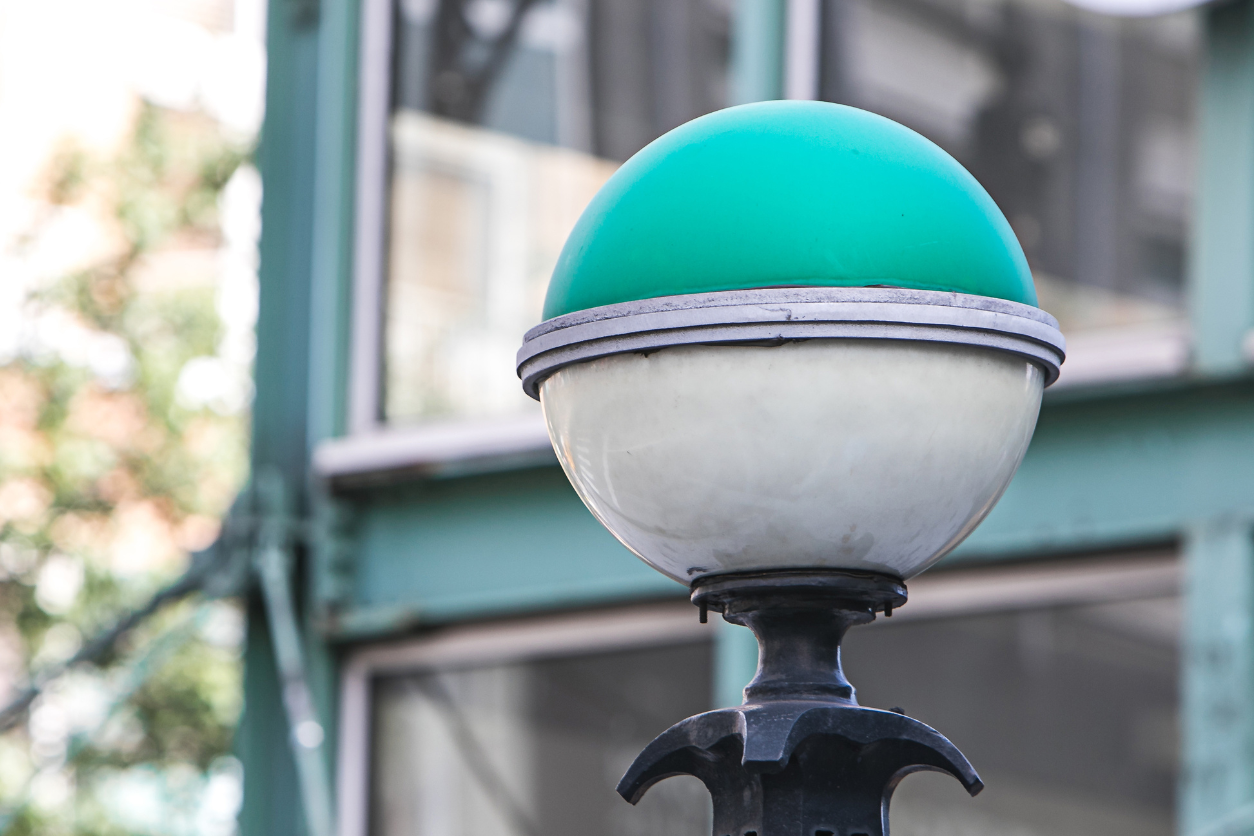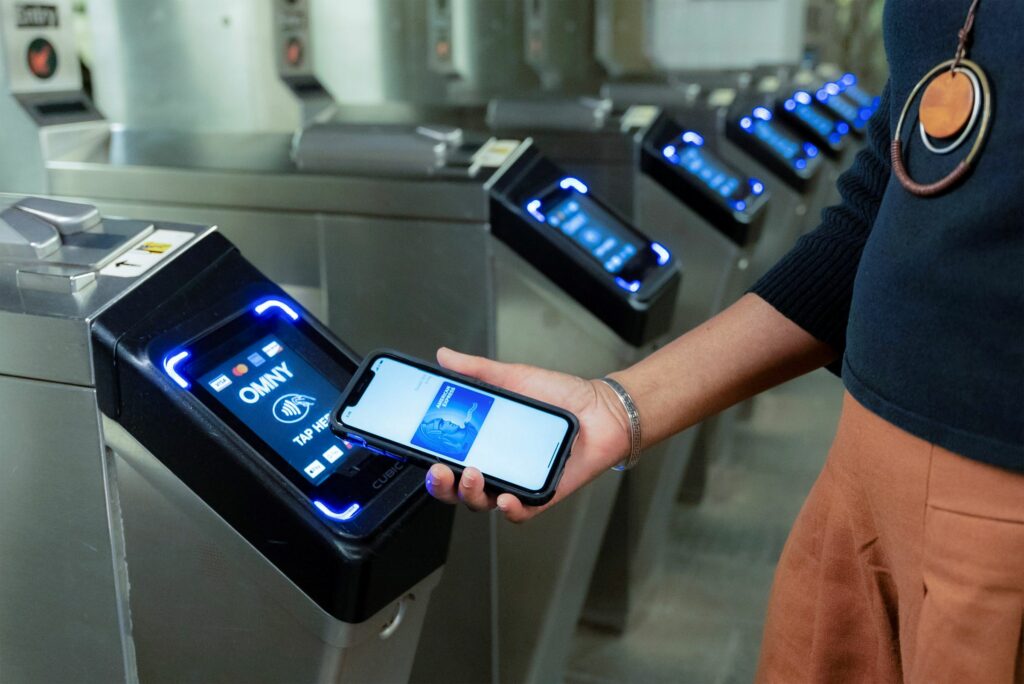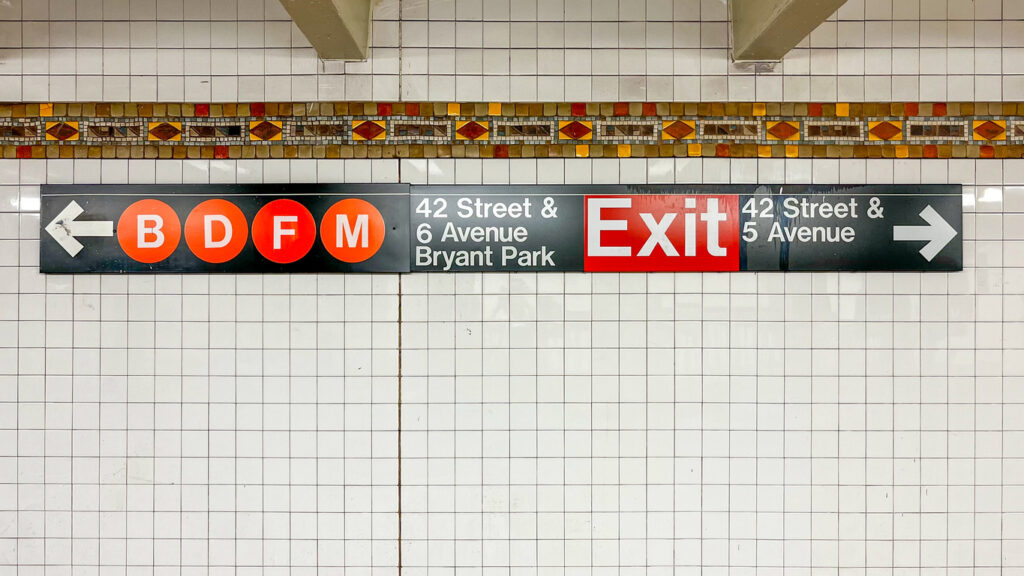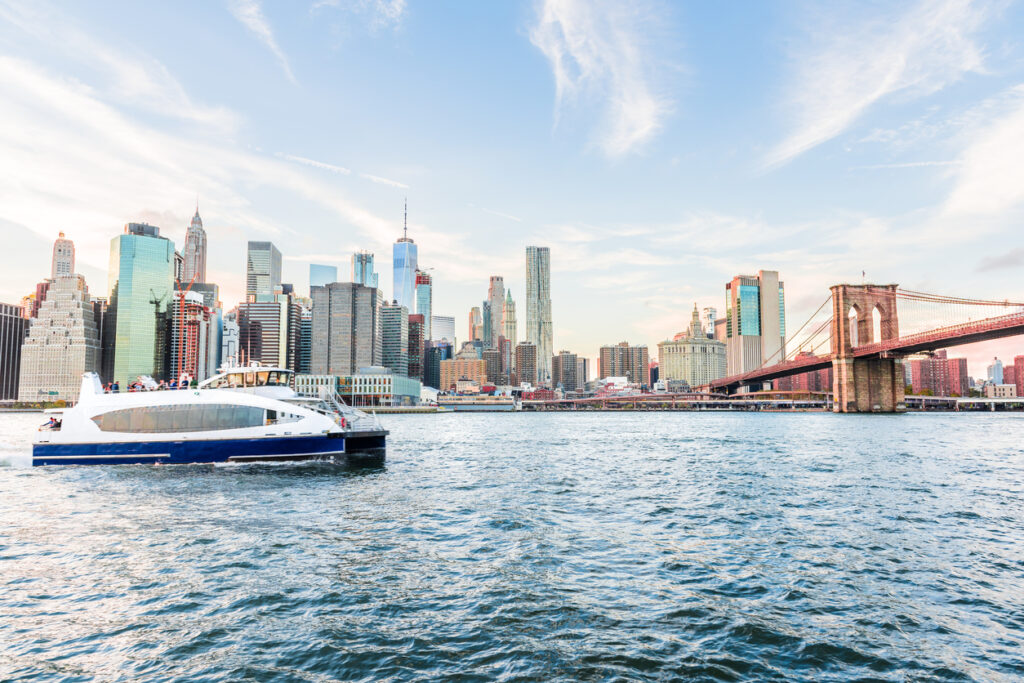
Insider Secrets for Navigating NYC Public Transit Like a Pro
With 423 subway stations, over 14,000 bus stops, 3 commuter rail systems, and the largest fleet of ferries in the US covering interborough and interstate maritime travel, New York City’s public transit system may seem daunting.
Starting back in 1812 with the introduction of horse-drawn omnibuses, the public transit infrastructure quickly developed with the introduction of streetcar lines in 1832, elevated trains, and eventually the 1904 opening of the Interborough Rapid Transit (IRT), the city’s first subway line. Today, these options have revolutionized urban transportation, forming a complex network connecting the five boroughs and beyond.
Navigating New York City’s extensive transit system can seem daunting, but with a few insider tips, it can quickly become your key to unlocking easy and affordable access to the entire city. So, gather your bearings and read on to learn more about how to become a pro in no time.

1. Opt for OMNY’s Tap-to-Pay
Gone are the days of Metrocard swiping, though old Metrocards will still be valid for until mid-2024. The city’s new OMNY system allows you to tap your contactless credit card or digital smartphone wallet (Apple or Google Pay) on both buses and subways to quickly pay for your fare. To maximize savings, ensure consistency by using the same payment method throughout your journey and take advantage of the 7-day fare cap. This feature ensures you won’t spend more than $34 on transit in a single week automatically.
2. Don’t Be Afraid of a Transfer
It’s likely that you’ll need to transfer lines, or from bus to subway or vice versa. It’s another reason to keep the same payment method with OMNY, as riders get a free transfer between two transit options for two hours from their initial swipe. (Keep in mind, this doesn’t include return trips to prior destinations.) The OMNY system will automatically track this through your card and you won’t be charged for your transfer.
3. Understand the Subway Map
The subway map may seem overwhelming at first glance, but it’s logically organized once you understand it. Each line has a color and number or letter designation. Knowing uptown vs. downtown trains and express vs. local stops will significantly ease your navigation.
Typically diamond lines are Express trains with circles being Local, which make additional stops. Pay attention closely to any posted signage in stations as it may designate service changes or interruptions like skipped stations, and changes in hourly service.
4. Use Transit Apps on Your Journey
Several apps like Google Maps, Apple Maps, Citymapper, and Transit are lifesavers. These apps act as indispensable tools, offering real-time updates on transit schedules, service disruptions, and alternative routes tailored to your current location.

5. Pay Close Attention to Signage
Train lines and systems have undergone consolidation at various points in New York’s history, resulting in subtle differences between stations and lines. Avoid assuming that one side of the platform is consistently northbound while the opposite side is southbound. In certain instances, both sides of the platform may head in the same direction.
Don’t overlook potential variations in direction or unexpected platform arrangements. Stay vigilant and attentive to signage details to avoid any unexpected destinations.
6. Empty Train Car – Be Suspicious
We’ll keep this one short and sweet. Every New Yorker knows that an empty train is usually a bad sign. You may find yourself in a smelly situation if you dare to be the solo traveler on the train.
7. Stand Clear of the Closing Doors, Please!
This might seem obvious, but it’s a crucial etiquette rule. Let people exit the train before you board, and move to the center of the car to make room for others. Expect to cram in tight during busy rush hours. Be respectful and vigilant of subway performers (you’ll get used to hearing “Showtime!”) and avoid getting potentially kicked by a quick-moving dancer.
Similar rules go for bus lines where you must pay attention to seats reserved for the handicapped, elderly, or pregnant.
8. Utilize Select Bus Service
Certain bus routes offer a quicker journey via Select Bus Service. These routes have limited stops, expediting your travel time. Occasionally, you might need to obtain a ticket from a designated ticketing machine before boarding. Most buses on these routes also accommodate the OMNY Tap-to-Pay system for convenient fare payment.
9. Get Nautical
Don’t forget about the city’s ferry system! Travelers headed to or from Brooklyn, Queens, The Bronx, and Staten Island can take advantage of the city’s waterways to get around town. No matter the time of year, the NYC ferry is a comfortable commute, offering on-board refreshments, charging stations, and a temperature-controlled cabin. Plus, you’ll get spectacular city views at an affordable cost!
Did you know that each NYC Ferry was named by New York City second graders? Hence the Ferry Godmother, Dream Boat, and Tooth Ferry boats.

By incorporating these pro-tips into your transit routine, you’ll enhance your New York experience.